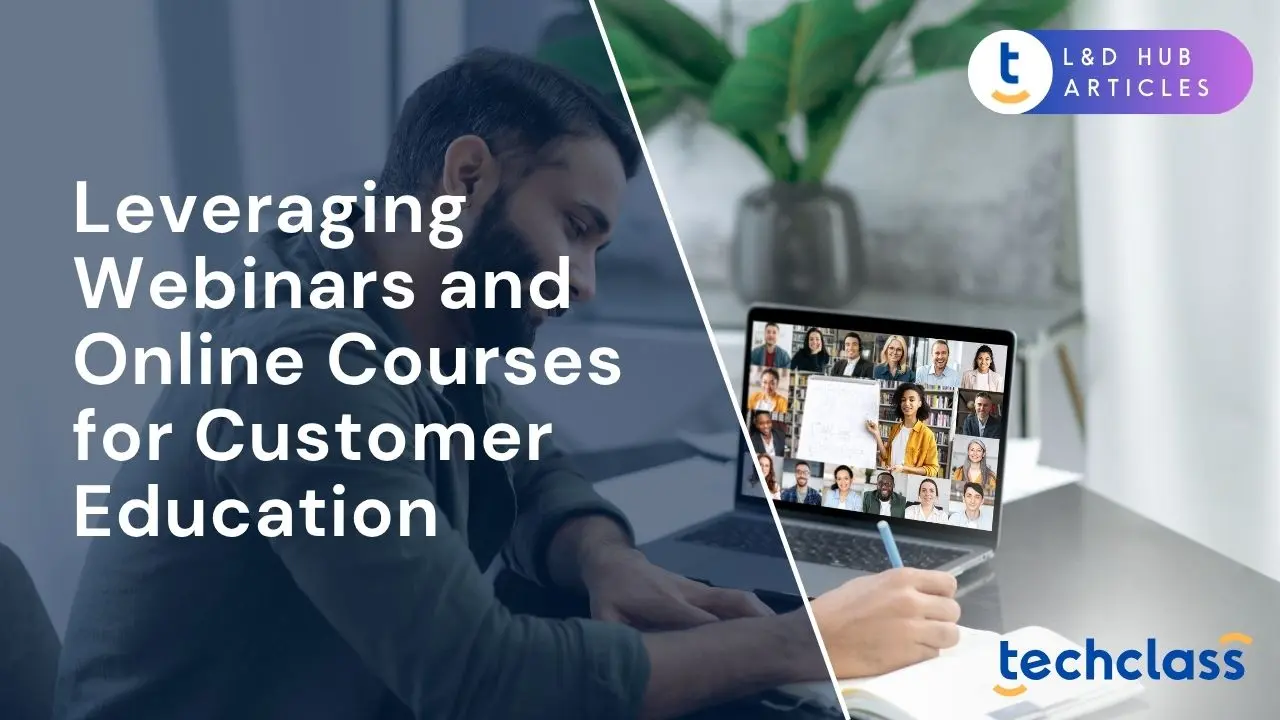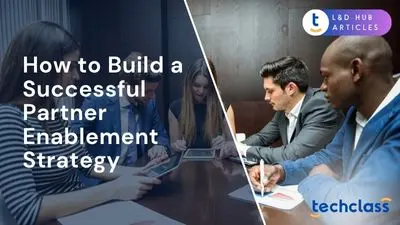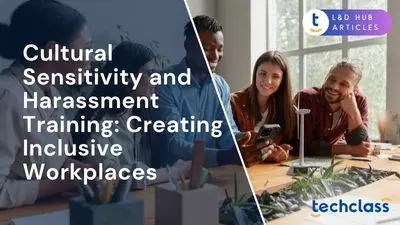
In today’s fast-paced business environment, educating customers has become just as important as training employees. Modern customers expect on-demand resources and interactive learning that help them use products or services effectively. Forward-thinking companies now leverage digital learning tools – especially webinars and online courses – to meet this need. By teaching customers how to achieve success with your offerings, you boost their satisfaction and loyalty, turning them into brand advocates. This article explores how webinars and online courses can transform customer education programs across industries, equipping HR professionals, business owners, and enterprise leaders to improve customer success.
Investing in customer education is no longer a “nice-to-have” – it’s a strategic imperative for businesses of all sizes. Well-educated customers are more successful in using your product, which leads to higher satisfaction, retention, and lifetime value. Research shows that companies with strong customer training programs see tangible benefits. For example, one study found that organizations implementing customer education reduced support requests by 16% and cut support costs by 7% on average. Educated customers adopt products faster and use more features, which in turn drives higher engagement and revenue. In fact, customer education programs can increase product adoption by an average of 38% while improving customer retention rates by over 20%.
Beyond the numbers, customer education fosters loyalty and trust. When customers feel confident using your solution, they are less likely to churn and more likely to recommend your brand to others. It also shifts the customer relationship from reactive support to proactive enablement. Rather than waiting for problems to arise, companies can anticipate needs by providing training resources upfront. This kind of support-before-it’s-needed creates a positive customer experience. As an added bonus, empowering users through learning frees up your support teams to focus on complex issues, since routine questions are answered by training materials. In short, a robust customer education strategy turns users into knowledgeable partners – a win-win for customer success and business growth.
Webinars are live online seminars that enable real-time interaction with a broad audience. They have emerged as a powerful tool for customer education, offering many benefits of in-person workshops at a fraction of the cost. Unlike physical seminars that require travel and venues, webinars let you reach hundreds of customers remotely, eliminating travel time and logistical hassles. This makes training scalable and accessible, especially for geographically dispersed clients.
One key advantage of webinars is the opportunity for live engagement. During a webinar, product experts or trainers can demonstrate features, share slides, and answer questions instantaneously. This direct access to experts through live Q&A helps customers feel supported and valued. For instance, a webinar on software best practices can include a session where users ask questions about their specific use cases and get answers on the spot. This interactive element builds a sense of community and connection that keeps customers engaged.
Another benefit of webinars is their flexibility – sessions can be recorded and repurposed as on-demand resources. By recording a live training webinar, you create a reusable video that new customers can watch at their convenience. This extends the reach of your customer education. Many companies hold regularly scheduled webinars (e.g. monthly) on topics like new feature updates, advanced tips, or industry insights. These recurring webinars keep users up-to-date and continuously learning. They also give organizations a channel to gather feedback in real time.
However, it’s important to use webinars thoughtfully. The most effective webinars focus on delivering genuine value or skill development, not just product promotion. Customers will quickly tune out if a webinar feels like a 60-minute sales pitch. Instead, webinars should teach something meaningful – for example, a software company might host a webinar on effective marketing strategies using their tool, rather than only walking through menus. Companies like Validately (a UX testing startup) exemplify this by using webinars to teach customers how to conduct better usability tests, rather than simply showing how to click buttons in the software. By ensuring the audience gains a new skill or insight, you make webinars worth their time. In summary, webinars offer an interactive, cost-effective platform for customer education when they are used to inform and empower users.
Online courses provide a structured, self-paced learning experience for customers. Delivered through learning management systems (LMS) or course platforms, they typically consist of modules with videos, tutorials, quizzes, and other multimedia content. As a customer education tool, online courses excel at providing depth and consistency. Learners can progress through a curriculum at their own pace, which means they can take the time they need on challenging topics and skip ahead if they’re comfortable – accommodating different learning styles and speeds. This self-paced nature ensures no customer is left behind, and advanced users aren’t held back by basics.
The benefits of online courses for customer education are backed by research. Studies have shown that online learning can be more efficient and scalable than traditional in-person training. For example, IBM found that learners in online courses absorb nearly five times more material without increasing time spent, compared to instructor-led classes. Companies also save significantly on training costs: replacing in-person sessions with e-learning can save 50–70% of the expenses, and online courses tend to be shorter while delivering the same value (25–60% less time required). These efficiencies are crucial for enterprises that need to train large customer bases on complex products.
Online courses are also easy to update and distribute, ensuring customers always have access to the latest information. If your product or policies change, you can simply update a module in the course rather than scheduling new live sessions. Docebo, a learning platform provider, notes that features like webinars, videos, and interactive content within an LMS drive customer engagement, and online courses can be kept current so that users always get up-to-date product knowledge. Furthermore, modern LMS platforms allow you to track learner progress and performance. This means your team can monitor which course sections are most challenging (through quiz scores or drop-off rates) and improve them continuously. The data from course analytics can help pinpoint common customer pain points and successes, informing everything from product development to support documentation.
Importantly, well-designed courses do more than teach button-clicking – they help customers achieve desired outcomes. HubSpot, for example, built HubSpot Academy courses not only to show how to use their marketing software, but also to teach broader marketing skills (like writing effective emails or blogs) that make their customers more successful overall. By creating comprehensive online academies with certifications, companies elevate user proficiency and confidence. In turn, educated customers are more likely to adopt advanced features and stick with the product long-term. Overall, online courses offer an in-depth, scalable way to educate customers, providing them with a rich learning journey that drives product mastery.
To get the most out of webinars for customer education, it’s crucial to follow best practices that maximize engagement and value. First, focus on value-driven content. As noted earlier, avoid turning webinars into lengthy commercials. Plan your webinar content around solving common customer challenges or sharing tips that attendees can apply immediately. For example, if you offer HR software, a webinar topic could be “5 Ways to Improve Employee Onboarding using [Your Product]” – this teaches strategies, not just features. Ensure that every webinar attendee leaves having learned something useful, whether or not they buy additional services.
Second, encourage interaction throughout the webinar. A big advantage of live webinars is the ability to engage with your audience. Use features like live polls, chat, and Q&A sessions to make it a two-way conversation. Many successful webinars allocate time for live Q&A with product experts, which makes customers feel heard and supported. You can also pose questions to the audience (“How many of you have tried X feature?”) or incorporate quick knowledge checks. Interaction not only keeps participants attentive but also provides you with feedback and insight into customer interests.
Next, mind the timing and pacing. Keep webinars concise and focused – typically ,30 to 60 minutes is ideal to maintain attention. Use a clear agenda and consider breaking up longer presentations into segments separated by Q&A or interactive exercises. Visuals are key: use demonstration screenshares or slides to complement your talking points, as many people learn visually. If the topic is complex, consider hosting a series of shorter webinars rather than one marathon session. Regular cadence can work well (e.g., a monthly webinar series), as it creates anticipation and habit among your user community.
Another best practice is to record and repurpose webinar content. Always record your webinars and share the recording with registrants afterward. This provides value for those who couldn’t attend live and reinforces learning for those who did. The recorded videos can be edited into shorter tutorials or added to your online course library, extending their lifespan. For instance, a one-hour webinar could later be broken into several 10-minute how-to videos embedded in your knowledge base or training courses. Repurposing ensures no great content is wasted and offers on-demand resources for customers.
Finally, consider blending expertise and promotion wisely. While the core of a webinar should be educational, it’s fine to include a subtle call-to-action or highlight relevant product features in context of the lesson. One effective approach is inviting guest speakers or industry experts to present on broader topics (not just your product) – this provides credibility and extra value for the audience. For example, a cybersecurity software company might host a webinar with a security expert discussing best practices, with a segment on how their tool supports those practices. Such webinars position your brand as a thought leader and avoid the trap of feeling too “salesy.” By following these practices, webinars can significantly boost your customer education efforts, keeping users engaged and informed in a format they enjoy.
Creating an online course for customer training requires careful planning and instructional design. Here are some guidelines to ensure your courses truly help customers succeed. First, make courses interactive and multimedia-rich. Gone are the days of text-heavy manuals or hours of lecture videos – effective online courses incorporate videos, screencasts, quizzes, infographics, and hands-on exercises to cater to different learning styles. Interactive elements like quizzes or simulations after each module help reinforce key concepts and let learners check their understanding. A mix of media keeps the content engaging and prevents fatigue. As one expert noted, long passive lectures are ineffective, whereas involving multiple senses improves retention. Aim to include practical activities, such as having users navigate the software in a sandbox environment or complete a sample task, to turn knowledge into skill.
Second, structure the course for easy consumption. Break down the material into clear, bite-sized modules or lessons. Each module should have a specific focus or goal (e.g. “Setting up your account profile” or “Advanced analytics features”) so that learners can easily follow the progression. Provide an outline or roadmap at the beginning to set expectations. Within each lesson, start with learning objectives, use step-by-step demos or stories to illustrate points, and conclude with a recap or knowledge check. Consistent structure helps busy customers pick up where they left off and navigate the course smoothly.
It’s also important to offer support and resources alongside the course. Not every customer will learn at the same pace, so include downloadable job aids, cheat sheets, or links to FAQs for those who need them. Encourage users to ask questions – this could be via a discussion forum attached to the course, a dedicated email, or periodic “office hour” webinars for course participants. By enabling some form of community or instructor support, you recreate the collaborative feel of in-person training in an online setting. Some companies integrate user discussion boards into their academies, so learners can help each other by sharing tips (building a customer community in the process).
Another best practice is to keep content updated and accessible. Regularly review your course material to ensure it reflects the current product interface and features. Online courses are relatively easy to update – you can replace an outdated video or add a new lesson without overhauling the entire program. This agility ensures customers always train on the latest information. Additionally, consider localization if you have a global customer base. Providing subtitles or translated transcripts can greatly enhance the experience for non-native speakers and broaden the reach of your education program.
Lastly, measure and motivate progress. Utilize your LMS analytics to track course completion rates, quiz scores, and feedback. These metrics will tell you how effective the course is and where learners might be dropping off (indicating a potential area to improve content). It’s also motivating to acknowledge progress: many successful customer academies issue certificates or badges when users finish courses or pass assessments. These rewards give learners a sense of accomplishment and can even be shared on professional networks, indirectly promoting your brand. By designing courses that are interactive, well-structured, supported, and up-to-date, you create an impactful learning experience that helps customers realize the full value of your product.
Webinars and online courses are not mutually exclusive – in fact, they complement each other in a well-rounded customer education program. Integrating the two formats can cover both real-time interaction and self-paced depth. One effective strategy is to use webinars as a supplement to core online courses rather than a replacement. For example, you might have a comprehensive online course that new customers take during onboarding, and then offer live monthly webinars to reinforce key topics or explore advanced questions. Gainsight, a customer success platform, suggests converting what would be webinar material into an online class for the core training, and using webinars for follow-up deep dives or Q&A sessions. This approach allows new users to learn the basics at their own pace, while still getting the benefit of live expert interaction periodically.
Conversely, you can leverage webinars to drive enrollment in your online courses. Hosting a high-value webinar on a hot topic can generate interest, and during the session, you can invite attendees to take a related e-learning course for more detailed instruction at their leisure. Because webinars attract a broad audience (sometimes even prospects), they act as a gateway to your richer on-demand training resources. Be sure to record your webinars and include those videos in your course materials where appropriate. Many organizations will edit webinar recordings into smaller clips and embed them within relevant lessons of a course. This not only repurposes content effectively, but it also gives course learners a “live” perspective on the topic, adding variety to the curriculum.
Another integration tactic is to hold webinar follow-ups or office hours for course takers. After a cohort of customers completes an online course, you could schedule a live Q&A webinar exclusively for them to address any remaining questions or discuss real-world applications. This hybrid model combines the strengths of both formats – the depth and consistency of a course with the personalization and spontaneity of a live session. It also reinforces accountability; knowing there will be a live discussion can motivate customers to finish the self-paced modules beforehand so they can participate fully.
Finally, consider how webinars and courses together can address different learning preferences. Some customers may prefer the interactive nature of webinars, while others like the autonomy of courses. By offering both, you allow customers to choose their preferred learning path. A study by TalentLMS highlights that a mix of resources (webinars, tutorials, videos, and an LMS) creates a more engaging learning experience that caters to diverse styles. The most successful customer education programs often blend multiple content types into an integrated ecosystem of learning. In summary, combining webinars and online courses provides the best of both worlds: immediate engagement and in-depth mastery. This integration leads to a more comprehensive education program that can adapt to your customers’ needs and schedules.
Many leading companies across industries have embraced webinars and online courses to educate their customers – with impressive results. Salesforce, for instance, built a customer learning platform called Trailhead that is often cited as a gold standard in customer education. Trailhead offers free online courses and modules on using Salesforce products and general business skills. Not only does this help users get more value from the software, it has real career benefits for them – Salesforce reports that about 50% of Trailhead users gained skills that led to a promotion or pay raise in their job. This success translates into a more engaged user community and a strong pool of advocates for the Salesforce ecosystem.
Another example is Shopify, an e-commerce platform. Shopify created Shopify Academy, which includes on-demand courses and live workshops to help merchants and partners succeed online. Through its Academy, Shopify teaches users how to set up and grow their online stores, and even how to become Shopify development partners. This education strategy has paid off: by training more developers and experts via courses, Shopify indirectly increases its own revenue (developers on the platform contribute a share of their earnings back to Shopify). In short, enabling customers and partners with online courses has driven business growth for Shopify while empowering its users to profit and thrive.
Software companies like HubSpot and monday.com also offer robust customer education programs. HubSpot’s Academy, as mentioned, provides extensive courses and certifications in marketing, sales, and customer service topics – not just product tutorials. This has been so effective in improving customer success that HubSpot made completion of certain training a requirement for its largest clients. The idea is that educated customers will see better results (e.g. better marketing campaigns), which makes them more likely to renew and expand usage. Meanwhile, monday.com (a work management platform) has an Academy with course-based learning and certifications, plus a rich knowledge base. They’ve reported that partners who engage deeply with their training program attribute 80% of their revenue to their monday.com practice, underlining how education fuels ecosystem growth.
Even startups and smaller companies leverage webinars and courses. Notion, a productivity app, launched Notion Academy with guides and live webinars to shorten the learning curve for new users. Notion goes a step further by personalizing recommendations – for example, emailing users with suggested training content based on how they use the product. This proactive education helps users discover features and best practices they might miss, leading to higher satisfaction. Impressively, Notion has credited its focus on user education and community for its viral growth, with 99% of its expansion reportedly driven by word-of-mouth referrals. That kind of advocacy is only possible when users feel confident and excited enough to champion the product to others.
These real-world cases demonstrate that regardless of industry – be it CRM software, e-commerce, marketing, or productivity tools – a strong customer education program pays dividends. By offering webinars, online courses, and other learning resources, companies not only improve the customer experience but also drive tangible business outcomes like higher retention, increased revenue, and community building.
Webinars and online courses have proven to be invaluable for educating customers in an engaging, scalable way. By leveraging these tools, businesses can turn users into proficient, loyal champions of their products. The key is to deliver genuine value – use webinars to interact and address customer needs in real time, and use online courses to provide deep, self-service knowledge. When executed well, customer education creates a virtuous cycle: informed customers see more success, which makes them happier and more loyal, leading to increased usage and referrals that benefit the business.
Enterprise leaders and HR professionals in every industry should recognize that enabling customer success through learning is a smart investment. With technology making it easier than ever to deliver training content globally, now is the time to build or expand your customer education initiatives. Start by identifying common customer pain points or knowledge gaps, and develop a mix of live webinars and on-demand courses to bridge those gaps. Over time, continually refine your program with feedback and new content. Remember that the goal isn’t just to teach users how to click buttons, but to help them achieve their own goals using your product.
In an era where customer experience is a key differentiator, providing top-notch education is a powerful way to demonstrate your company’s commitment to its clients’ success. Whether you’re a SaaS startup or a traditional enterprise, leveraging webinars and online courses for customer education can lead to more empowered customers – and a healthier, more resilient business relationship. Equip your customers with knowledge, and you equip them to succeed with your solution.
Customer education enhances product adoption, satisfaction, retention, and loyalty, leading to increased revenue and a stronger customer relationship.
Webinars enable live interaction, real-time demonstrations, Q&A sessions, and are scalable and cost-effective, which foster engagement and support.
Online courses provide structured, self-paced, in-depth learning experiences with multimedia content, facilitating flexible and scalable training.
Use interactive multimedia, structure content into clear modules, support learners with resources, keep content current, and track progress for continuous improvement.
Webinars can supplement courses with live Q&A and follow-ups, while courses offer in-depth self-paced learning. Combining both provides immediate engagement and long-term mastery.
Salesforce with Trailhead, Shopify with Shopify Academy, HubSpot Academy, and Notion Academy are examples of companies using webinars and online courses to improve customer success.


